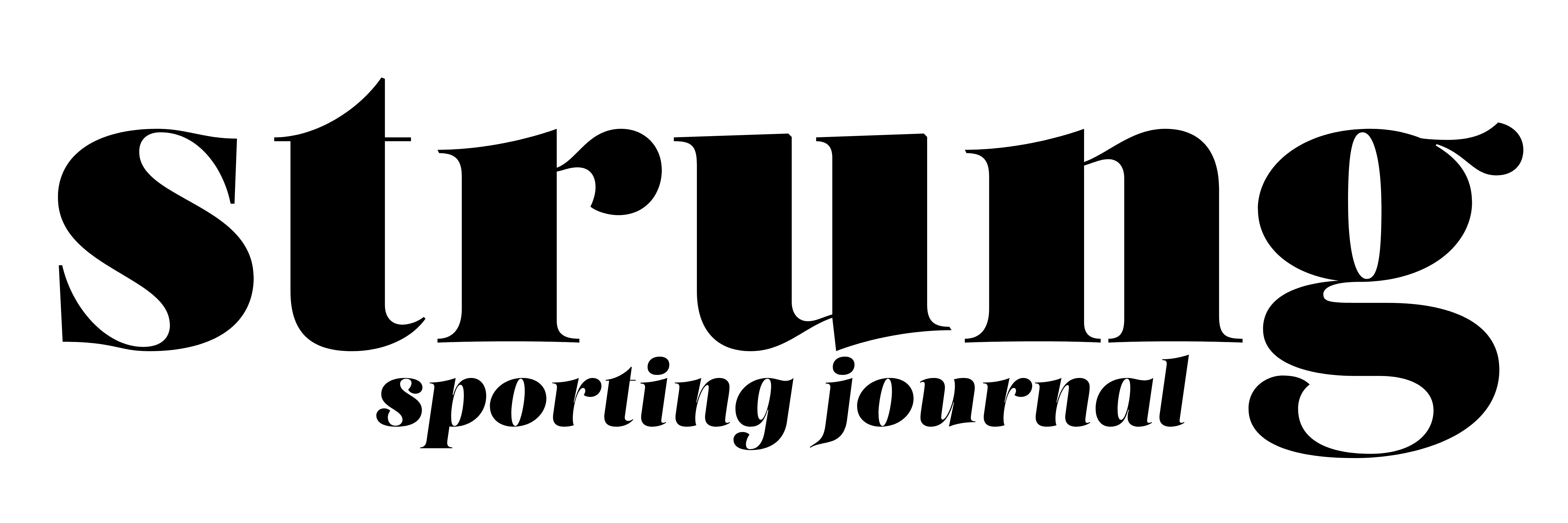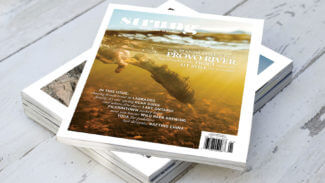Originally appeared in Strung Magazine, Winter 2018-2019
By Greg Thomas
Hunting upland birds without a dog almost isn’t hunting. But in 1996, some sort of weird weather mix in Montana allowed every Hungarian partridge and sharptail grouse to breeze into fall.
When I went into the field in September these birds seemed to be hiding behind every blade of grass. When major early snow hit the region, a predecessor to what became one of Montana’s biggest snow years on record, these birds didn’t even have the grass to hide behind—instead, they took to the haystacks and burrow pits and did their best to blend in.
It didn’t work. Huns and sharptails aren’t chameleons. The Huns’ orange heads, gray chests and shoulders, and their brownish backs stood as silhouettes on a blank, white canvass. All hunters had to do was cruise the backroads in a four-wheel-drive, stop at every haystack, get out of the rig and walk towards the birds until they took wing. I believe the limit on Huns was eight birds per hunter with a possession limit of 24. In addition, you could take four sharptails per day with a possession limit of 16. The problem wasn’t finding birds; the problem was cleaning stacks of those Huns and sharptails, plus any pheasants and waterfowl you and a friend might luck into, when you got home from the trip.
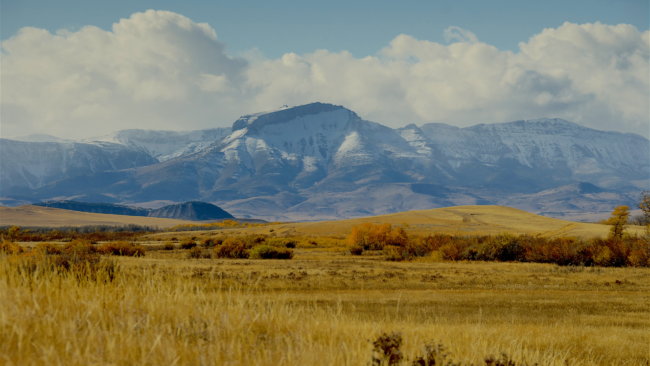 I actually had Labrador retrievers at the time, Moose and Shadow, and I often took them into the field that year, even though I didn’t need their noses to locate birds. One time they took care of the cleaning for me. On that occasion I’d left the dogs in back of the truck, under the canopy, with a cooler containing five huns. I jump shot a few more birds out of a burrow pit near a highway and returned to deposit those birds with the others. When I opened the cooler lid there wasn’t a bird to be seen. I asked a hunting partner, “Did you do something with those Huns?”
I actually had Labrador retrievers at the time, Moose and Shadow, and I often took them into the field that year, even though I didn’t need their noses to locate birds. One time they took care of the cleaning for me. On that occasion I’d left the dogs in back of the truck, under the canopy, with a cooler containing five huns. I jump shot a few more birds out of a burrow pit near a highway and returned to deposit those birds with the others. When I opened the cooler lid there wasn’t a bird to be seen. I asked a hunting partner, “Did you do something with those Huns?”
He replied, “No. Why?”
I answered, “Because they’re not here.”
And they weren’t—not a feather, nor a foot, not even a head or beak. Moose and Shadow glanced back and forth nervously, but they had nothing to worry about—an hour later we’d already filled the cooler with replacements.
That fall I hunted east of Livingston and north of Big Timber, where the plains fall off the Crazy Mountains and run, through arid sage and antelope country, almost undisturbed, all the way to the North Dakota line. Later, I started hunting birds along Montana’s “Hi Line,” an unofficial name that describes a swath of rolling hills, coulees, wheat fields and creek beds that roughly follow Highway 2 and stretch for more than 400 miles from the Rocky Mountain Front near Cut Bank, all the way to Plentywood, which rests just south of Saskatchewan and west of North Dakota. It’s stark country, loaded with gamebirds, and an avid hunter could spend every season here and not make a dent in seeing it all. It’s hard country, and could be a lonely if you spent enough time here alone; it’s hammered by winds and snow during winter, and scorched by sun during summer. But during fall, with Montana’s mountain ranges looming in the distance, antelope bucks fighting through the rut, pheasants exploding from the grass, and the first lines of waterfowl returning south, it’s as good as any place to be.
These days I mostly hunt along the Front, in the foothills of high mountains that range from Helena to the Canadian border. This is fantastic game country, offering pheasant, Huns and sharptail, along with whitetail deer and some massive mule deer bucks. There are plenty of elk here, too.
The area also is home to some of the highest grizzly bear densities in Montana, and the specific area I prowl provides annual theatrics for gamebird hunters. When you walk into thick cover here you do so carefully, with a fingertip next to the safety. When you see grizzly tracks in fresh snow, covering pheasant tracks that you and your dog are following, it’s time to get out. I love the line in The Outlaw Josey Wales, when a bounty hunter says to the gunfighter, “A guy’s got to make a living,” as if defending his intention to kill Wales on the spot. Wales steps out of the shadows, exposes his sidearms, and confidently responds, “Dying ain’t much of a living boy.”
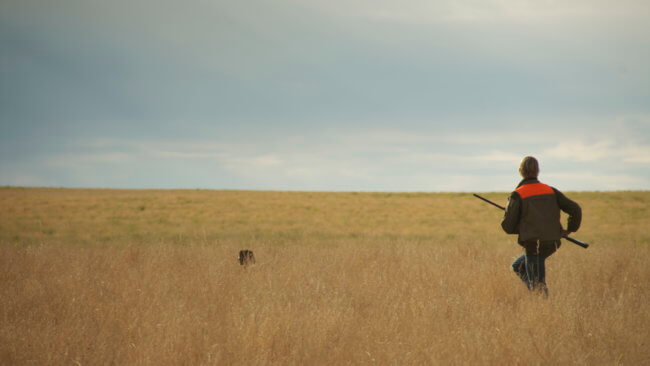 Well, I like hunting pheasants as much as anyone, and I treasure them on the plate, especially doused in olive oil and seasonings and fried in butter, but dying over a pheasant isn’t much of a living either, I often remind myself.
Well, I like hunting pheasants as much as anyone, and I treasure them on the plate, especially doused in olive oil and seasonings and fried in butter, but dying over a pheasant isn’t much of a living either, I often remind myself.
The griz factor plays a role in my opportunities to hunt a swath of private land that offers tremendous creek bottom habitat surrounded by massive wheatfields and miles of CRP (Conservation Reserve Program) lands. In my mind, it’s some of the best game country in Montana and I hunt it with two partners, one man in his mid-seventies and another who’s pushing 90. They’re from a different era, get away with speaking in a language that would get most of us fired these days, and they aren’t afraid to live each day like it could be their last.
One of them often says, “I’ve got to do it now because I’m in the eighth inning.” The other calls me “an invasive specie,” referring to my Seattle, Washington roots, and scads of other “invasives” moving into his formerly empty Montana, most notably from Washington and California. They are two of the proudest and successful men I’ve ever met, they are overly gracious to me, and the five or six days I spend with them each year are some of the most treasured and meaningful moments in my life.
Each morning we eat at the same little cafe where every waitress knows them well and teases them incessantly; we return for lunch and their traditional milkshakes before they take their naps or watch their college football games; then we head out in the field until dark; later, when we hit one of the two dinner options in town they go full caloric intake, opting for chicken-fried steaks with gravy, and mashed potatoes—with loads of butter and more gravy—that they mop up with slabs of Texas toast. They wash it all down with regional IPA’s. I always say, “When in Rome,” and then get on the scale at home and realize that hiking 10 miles a day wasn’t enough.
If you’ve hunted at all, you know that every pheasant doesn’t fall out of the sky stone-cold dead, nor does every deer fall on impact. Pheasants often run when they hit the ground and a lung-shot deer can cover a hundred yards or more before falling. And that’s happened several times while hunting with these men, meaning some of the pheasants and several of the whitetail bucks they’ve shot have made it into the creek bottom brush before dying . . . and you can guess who’s nominated to retrieve them.
Once, just before dark, one of the men shot a big whitetail buck that ran into that brush. I got out of the truck, walked to the edge of the river bottom, turned around and told them, “I’m not going in there.” By morning all that remained was one antler and the deer’s tail. Two matted areas in the grass told where the grizzlies slept off their hangovers.
Another time, I followed a blood trail into deep brush, with one of the men just behind me. When we found the deer he pulled out a knife, preparing to field-dress the buck. I looked around, estimated our visibility in all directions at eight feet and said, “Don’t you think we should drag it out of here first?” He folded the blade, tucked it in his pocket and said, “I knew there was a reason we invite you back.”
Both of these men own dogs, one being a scrap-fed Labrador that waddles around for its owner and rarely hunts for anyone else; the other man owns a pure-bred German shorthair that is a hunting machine. This shorthair is invaluable in Montana where a dog’s nose and its ability to cover a lot of ground dramatically increases a hunter’s chances of finding and shooting birds. And it’s just plain poetry to watch a lanky dog covering swaths of ground before locking up on point. That’s bird hunting.
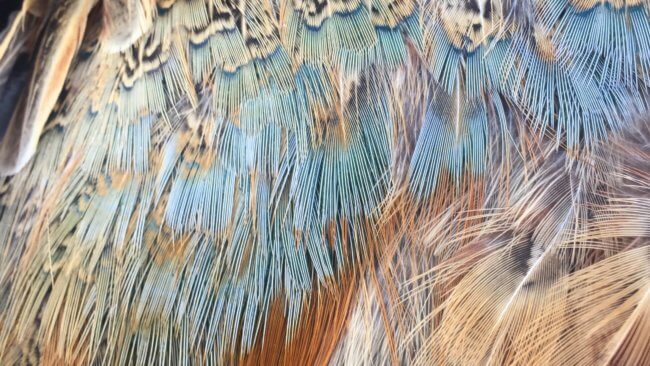 The truth is, I wouldn’t hunt birds very often if I couldn’t hunt behind that shorthair, and I wouldn’t even have a place to hunt if it weren’t for these older men calling each fall and asking, “When will you be up?”
The truth is, I wouldn’t hunt birds very often if I couldn’t hunt behind that shorthair, and I wouldn’t even have a place to hunt if it weren’t for these older men calling each fall and asking, “When will you be up?”
I’ve known one of these men since kindergarten. I’ve known the other for nearly 20 years. Both treat me as if I’m family. Losing either of these men won’t be fun.
I’ve gone through job hirings, job losses, magazine deaths, a marriage, the addition of kids, a divorce, and the lives and deaths of two Labradors . . . plus all the other things that make midlife a challenge, and still managed to accept their invitation each year. I make the trip with all the accoutrements, meaning a shotgun and boxes of shells, a rifle and spotting scope, and always a cooler full of fine food and drink. We talk about life and living, hunting and fishing, and we chat about the World Series and college football games. I’ve never been disappointed while on the fall hunting grounds with these men.
Both of these men think I should remarry so that I’m not alone when I’m their ages. But whenever a prospect approaches and I strike up the conversation, they point at me and say, “Don’t bother with him, he’s too busy and content running a trapline.” The waitresses blush; I shake my head; and the men just nod in satisfaction, as if saying, Yep, we got the young buck again.
I don’t mind. In fact, being the brunt of the jokes, being the designated deer-dragger, and helping these men get their roosters and bucks each year, is pure magic. The day it ends starts a whole new life.
